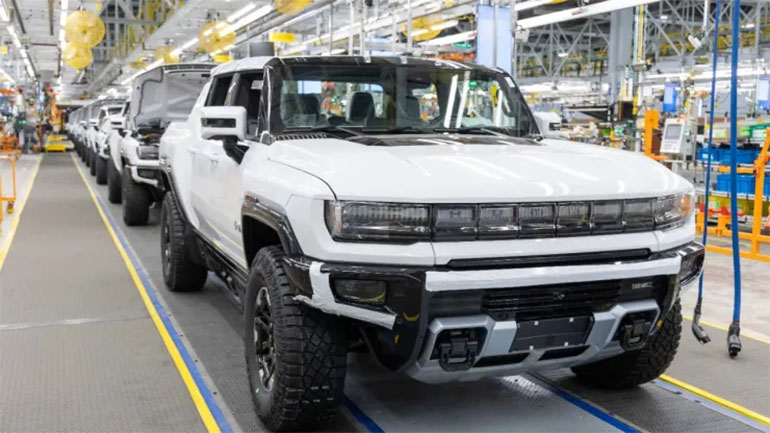
According to a forecast and analysis conducted for Reuters, General Motors (GM) may face a battery bottleneck that could hinder its projected EV production for 2025. While GM has announced plans to have the capacity to manufacture 1 million electric vehicles in North America by 2025, the slow ramp-up of its three U.S. battery plants might limit actual EV production to less than 600,000 by the mid-decade. AutoForecast Solutions (AFS), a respected industry research and analytics firm based in Pennsylvania, has expressed concerns about achieving the target of producing over half a million EVs in North America in 2025 based on GM’s planned battery production in Ohio, Tennessee, and Michigan.
GM spokesperson Jim Cain has stated that the company has not altered its targets, which include a cumulative EV production of 400,000 from early 2022 through mid-2024, as reiterated by CEO Mary Barra. Wedbush auto analyst Dan Ives believes that GM’s targets are still achievable despite the obstacles.
Also, don’t forget that you can get discounted new car pricing with a free quote through qualified local dealer partners.
For 2024 and 2025, GM has not released specific EV production targets for North America. The company’s joint venture with LG Energy Solution, called Ultium Cells, has opened its first plant in Warren, Ohio, with a second plant in Spring Hill, Tennessee, scheduled to commence production in early 2024. Additionally, a third plant in Lansing, Michigan, is expected to open in early 2025. These facilities, in collaboration with LGES, produce Ultium battery packs, which are utilized in GM’s newest EVs in North America.
GM has stated that the combined annual capacity of the three battery plants will be at least 135 gigawatt-hours (GWh), equivalent to supplying a minimum of 1.35 million EVs per year. However, AFS predicts that due to the staggered startup schedules and slow ramp, the three battery plants will only manage to produce approximately 58 GWh worth of cells, enough to supply around 550,000 vehicles. Sam Fiorani, head of global vehicle forecasting at AFS, asserts that limitations on battery capacity will make it challenging for GM to achieve higher vehicle production targets. Additionally, securing sufficient raw materials for batteries may also constrain GM’s projected EV volumes.
In July 2022, GM announced that it had secured enough battery raw materials, such as lithium, nickel, cobalt, and cathode active material, to meet its goal of producing 1 million EVs annually in North America by 2025. The company has an extensive global battery materials supply chain, involving investments, partnerships, and offtake agreements with over 20 companies, including Glencore, Livent, Posco Chemical, LG Chem, and Lithium Americas. However, some of these agreements may not result in a steady flow of materials until after 2025, and the increasing investments and production plans of global automakers for future EVs could pose challenges to the availability of supplies.
AFS indicates that GM’s North American EV production targets beyond 2025 will continue to strain its battery plants, including a newly announced fourth factory with Samsung SDI, expected to open in 2026. Despite GM’s ambitious projections for EV production in the latter half of the decade, AFS suggests that accessing the necessary components and materials for this growth will become progressively more difficult.
As for current EV production figures, AFS estimates that GM will manufacture approximately 76,000 EVs in North America this year and around 328,000 in 2024. GM’s Chevrolet brand plans to introduce several new electric vehicles in 2023, such as the Equinox and Blazer EVs and a Silverado EV pickup. Production of the Bolt EV and Bolt EUV is set to end this year. The production of the Cadillac Lyriq and GMC Hummer EV has not yet reached full capacity, with only 968 Lyriqs and two Hummer pickups delivered in the first quarter of this year.
Source: Reuters